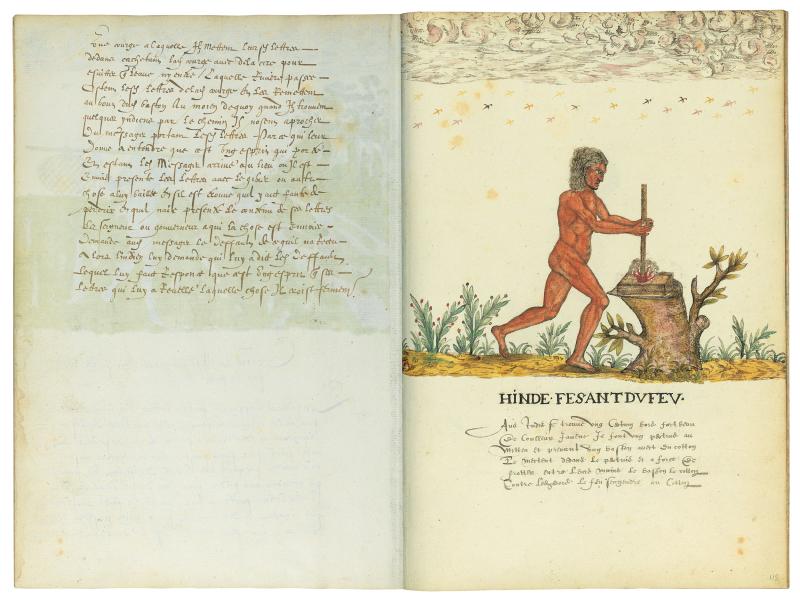
Histoire Naturelle des Indes
Illustrated manuscript
Bequest of Clara S. Peck, 1983
Continued from fol. 117
a gourd in which they place the letters, sealing it with wax to keep the water out. Having passed the river, they take out the letters and put them back at the end of the stick. This way, when they find some Indians on their way, these do not dare come near the messenger carrying the letters because he gives them to understand that it is a ghost he carries. When the messenger arrives at the place he has been sent to and has presented the letters together with the game and other things given him and when it is found that a partridge is missing and that he has not presented the contents of the letters, the Lord or Governor to whom these things were sent asks the messenger regarding the missing object. Then the Indian asks him who told him about the missing things and he answers that his letters are a ghost who has revealed it to him, a thing which he [the Indian] firmly believes.
Hinde Fesantdvfev (The Indian Making a Fire)
A certain wood is found in the Indies which is very beautiful and yellow in color. They make a hole in the middle of the tree trunk and, taking a stick with cotton, they place it in the hole. By forcefully rubbing the stick with the cotton between their hands against the wood, a fire is started in the cotton.
In 1983, The Morgan Library & Museum received, as the bequest of Clara S. Peck, an extraordinary volume whose beautiful paintings and descriptions document the plant, animal, and human life of the Caribbean late in the sixteenth century. Spaniards had already begun to exert influence over the indigenous people of the area when explorers from England and France arrived, among them Sir Francis Drake. The volume, known as the Drake Manuscript and titled Histoire Naturelle des Indes when it was bound in the eighteenth century, gives us a wonderful picture of daily life at the time of Drake's many visits to the region. Although Drake's connection to the manuscript is uncertain, he is mentioned on more than one occasion by the authors. Drake himself is known to have painted, but none of his work survives.
Contents: 199 images of West Indian plants, animals and human life, with accompanying manuscript captions written in late sixteenth-century French.
Medium: Most of the illustrations consist of a black chalk underdrawing and a combination of pen and brown ink with watercolor; on some images selected areas have also been glazed with a gum.
Binding: Bound or rebound in brown leather in the late 18th century.
Pagination: Penciled folio numbers (1–125) in lower right corner of each page were added by The Morgan Library & Museum. Folios 92v–93, 93v–94, and 95v–96 are fold-out leaves.
